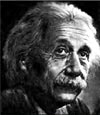




Gregorie-Ricci Curbastro
(Italian, 1853-1925)
invented tensor calculus. Tensor calculus and tensor algebra are essential tools in many fields of engineering, including fluids and solid mechanics, and in modern physics. All these subjects are critical to the safe and effective management of nuclear energy.

Marie Sklowdowska Curie
(Polish, 1867-1934)
discovered the new elements polonium and radium. Her work deepened our understanding of radioactive materials, which ultimately lead to the development of nuclear energy technology. Curie also pioneered the use of radiation for cancer treatment.